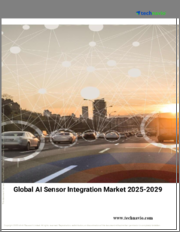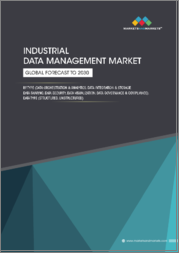
|
시장보고서
상품코드
1831843
데이터 시각화 시장 보고서 : 컴포넌트별, 조직 부문별, 배포 모드별, 기업 규모별, 최종사용자별, 지역별(2025-2033년)Data Visualization Market Report by Component, Organizational Department, Deployment Mode, Enterprise Size, End User, and Region 2025-2033 |
||||||
세계의 데이터 시각화 시장 규모는 2024년에 42억 달러에 달했습니다. 향후 IMARC Group은 이 시장이 2033년까지 82억 달러에 달하며, 2025-2033년에 7.38%의 성장률(CAGR)을 보일 것으로 예측하고 있습니다. 데이터 양 증가, 실시간 분석에 대한 수요 증가, 더 나은 의사결정 툴에 대한 요구, AI와 머신러닝의 발전, 사용자 친화적인 툴와 클라우드 기반 솔루션의 부상 등이 시장 성장의 주요 요인으로 작용하고 있습니다.
데이터 시각화 시장 동향
데이터베이스 의사결정에 대한 수요 증가
비즈니스가 데이터 중심이 되면서 복잡한 데이터를 시각적 형태로 단순화하여 제시하는 툴에 대한 요구가 증가하고 있습니다. 예를 들어 Domo는 2024년 3월 Domopalooza: the AI+Data Conference에서 Domo의 로우코드 앱 빌더인 App Studio를 일반에 공개한다고 발표했습니다. 또한 로우코드 자동화 엔진 Workflows를 강화, 간소화하고 서드파티 액션으로 자동화를 확대했다고 발표했습니다. 마찬가지로 2024년 6월, 국내 지형공간 소프트웨어 프로바이더인 맵마이인디아(MapmyIndia)는 고객 중심의 인공지능(AI) 기반 데이터 분석 및 컨설팅을 기업 고객에게 제공하는 데 초점을 맞춘 클래리티엑스(ClarityX)를 출범했습니다. Clarity X는 다차원 정적 데이터와 실시간 데이터에서 AI 기반 인사이트를 기업에 제공하여 신속한 전략적 의사결정과 디지털 전환을 촉진할 수 있도록 함으로써 MapmyIndia의 기업용 서비스 및 대응 가능한 시장을 확대할 수 있도록 지원합니다. 데이터 시각화 시장 예측에 따르면 데이터 시각화 툴은 신속한 의사결정을 가능하게 하고 전략적 인사이트를 강화하므로 빅데이터 분석에 필수적인 툴이 될 것으로 보입니다.
비즈니스 인텔리전스(BI) 툴의 채택 증가
최근 데이터 시각화와 BI 플랫폼과의 통합이 급격히 증가하고 있으며, 이를 통해 기업은 보다 효과적으로 데이터를 분석하고 제시할 수 있게 되었습니다. Tableau, Power BI, Google Data Studio와 같은 툴은 기업이 원시 데이터를 실행 가능한 인사이트으로 전환하는 데 도움을 주고 있습니다. 예를 들어 Tableau는 2024년 9월 데이터베이스 워크플로우를 확장하고 강화할 수 있는 AI 시각적 분석 플랫폼인 Tableau Einstein을 발표했습니다. Tableau Einstein은 데이터 추출 파트와 분석가가 실시간 고객 데이터를 기반으로 시맨틱 모델을 생성할 수 있도록 지원합니다. Tableau의 통합 마켓플레이스와 API는 소스, 모델, 시각화, 대시보드와 같은 다양한 데이터 자산을 서로 다른 팀원들이 드래그 앤 드롭 방식의 간소화된 워크스페이스에서 작업할 수 있도록 함으로써 사내 협업을 더욱 촉진합니다.
빅데이터와 인공지능(AI) 확대
빅데이터와 AI의 확장과 함께 조직은 방대한 양의 정형 및 비정형 데이터를 수집하고 있습니다. 이러한 데이터를 처리, 분석, 시각화하여 명확하고 이해하기 쉬운 형태로 만들어야 할 필요성이 금융, 헬스케어, 소매, IT 등 산업 전반에 걸쳐 데이터 시각화 툴에 대한 수요를 증가시키고 있으며, 데이터 시각화 시장 전망을 더욱 밝게 하고 있습니다. 예를 들어 2024년 6월 Databricks는 개별 데이터 플랫폼에 네이티브한 실제 데이터를 사용하여 지능형 분석을 수행하기 위한 AI 우선 시각화 툴인 AI/BI를 발표했습니다. 이 AI 그래픽 툴은 기업이 데이터를 어떻게 다루는지에 대한 기준을 재정의할 목적으로 출시되었습니다. Databricks의 최신 제품은 인공지능 그래픽과 비즈니스 인텔리전스(BI)의 힘을 결합하여 시선을 사로잡고 놀랍도록 인사이트 있는 시각화를 만들어냅니다. AI/BI는 고유한 데이터와 비즈니스 개념에서 신호를 얻어 자연 언어 쿼리를 통해 복잡한 데이터를 독자적으로 분석할 수 있습니다.
목차
제1장 서문
제2장 조사 범위와 조사 방법
- 조사의 목적
- 이해관계자
- 데이터 소스
- 1차 정보
- 2차 정보
- 시장 추정
- 보텀업 어프로치
- 톱다운 어프로치
- 조사 방법
제3장 개요
제4장 서론
제5장 세계의 데이터 시각화 시장
- 시장 개요
- 시장 실적
- COVID-19의 영향
- 시장 예측
제6장 시장 내역 : 컴포넌트별
- 소프트웨어
- 서비스
제7장 시장 내역 : 조직 부문별
- 판매
- 마케팅
- 재무
- 업무
- 경영 임원
- 기타
제8장 시장 내역 : 배포 모드별
- 온프레미스
- 클라우드 기반
제9장 시장 내역 : 기업 규모별
- 중소기업
- 중견 기업
- 대기업
제10장 시장 내역 : 최종사용자별
- BFSI
- 교육
- IT·통신
- 소매업과 E-Commerce
- 제조
- 정부
- 기타
제11장 시장 내역 : 지역별
- 북미
- 미국
- 캐나다
- 아시아태평양
- 중국
- 일본
- 인도
- 한국
- 호주
- 인도네시아
- 기타
- 유럽
- 독일
- 프랑스
- 영국
- 이탈리아
- 스페인
- 러시아
- 기타
- 라틴아메리카
- 브라질
- 멕시코
- 기타
- 중동 및 아프리카
제12장 SWOT 분석
제13장 밸류체인 분석
제14장 Porter's Five Forces 분석
제15장 가격 분석
제16장 경쟁 구도
- 시장 구조
- 주요 기업
- 주요 기업의 개요
- Alteryx Inc.
- Domo Inc.
- Dundas Data Visualization Inc.
- Hitachi Ltd.
- InetSoft Technology Corp.
- International Business Machines Corporation
- Microsoft Corporation
- MicroStrategy Incorporated
- Oracle Corporation
- Salesforce.com Inc.
- SAP SE
- SAS Institute Inc.
- TIBCO Software Inc.
The global data visualization market size reached USD 4.2 Billion in 2024. Looking forward, IMARC Group expects the market to reach USD 8.2 Billion by 2033, exhibiting a growth rate (CAGR) of 7.38% during 2025-2033. The increasing volume of data, the growing demand for real-time analytics, the need for better decision-making tools, advancements in AI and machine learning, and rising user-friendly tools and cloud-based solutions are some of the major factors propelling the market growth.
Data Visualization Market Trends:
Growing Demand for Data-Driven Decision Making
As businesses become more data-centric, there is a rising need for tools that simplify and present complex data in visual formats. For instance, in March 2024, Domo announced at Domopalooza: the AI + Data Conference that App Studio, Domo's low-code app builder, is now generally available. The company also announced that it has bolstered its low-code automation engine Workflows, streamlining, and extending automation with third-party actions. Similarly, in June 2024, Homegrown geospatial software provider MapmyIndia launched ClarityX company, which is focused on providing enterprise clients with customer-centric artificial intelligence (AI)-driven data analytics and consulting. ClarityX will help expand MapmyIndia's enterprise offerings and addressable market, by empowering enterprises with AI-driven insights from multi-dimensional static and real-time data, enabling immediate strategic decision-making and driving digital transformation. According to the data visualization market forecast, this will enable quick decision-making and enhance strategic insights, thus making data visualization tools critical for interpreting big data.
Increasing Adoption of Business Intelligence (BI) Tools
The integration of data visualization with BI platforms has drastically increased in the recent years, thereby allowing companies to analyze and present data more effectively. Tools like Tableau, Power BI, and Google Data Studio help businesses transform raw data into actionable insights. For instance, in September 2024, Tableau launched its AI visual analytics platform, Tableau Einstein, to help scale and enhance data-driven workflows. Tableau Einstein allows data experts and analysts to create semantic models based on real-time customer data. Tableau's integrated marketplace and APIs further facilitate internal collaboration by enabling different team members to work across different data assets, such as sources, models, visualizations, and dashboards, in a streamlined drag-and-drop workspace.
Expansion of Big Data and Artificial Intelligence (AI)
With the growth of big data and AI, organizations are collecting vast amounts of structured and unstructured data. The need to process, analyze, and visualize this data in a clear, comprehensible format is boosting the demand for data visualization tools across industries such as finance, healthcare, retail, and IT, which is further creating a positive data visualization market outlook. For instance, in June 2024, Databricks launched AI/BI, the AI-first visualization tool for performing intelligent analytics using real-world data native to individual data platform. This AI Graphics tool is launched with the aim to redefine the standards for how businesses interact with their data. Databricks' latest offering combines the power of artificial intelligence graphics with business intelligence (BI) to create eye-catching and incredibly insightful visualizations. AI/BI can independently analyze complex data through natural language queries by capturing signals from unique data and business concepts.
Data Visualization Market Segmentation:
Breakup by Component:
- Software
- Services
Software accounts for the majority of the market share
Software is the predominant segment in the market due to its scalability, ease of integration, and ability to process large datasets efficiently. Advanced data visualization software, such as Tableau and Microsoft Power BI, provides powerful tools for creating interactive dashboards, charts, and graphs. These solutions enable businesses to visualize complex data in real-time, making insights more accessible. Additionally, the flexibility of cloud-based and on-premise software solutions allows organizations to customize their analytics, driving the expansion of the software segment.
Breakup by Organizational Department:
- Sales
- Marketing
- Finance
- Operations
- Executive Management
- Others
Sales holds the largest share of the industry
The sales segment dominates the market because sales teams need real-time insights to track performance, forecast revenues, and refine strategies. Data visualization tools simplify complex sales metrics, allowing teams to monitor customer behavior, sales funnels, and market trends more efficiently. By enabling quicker decision-making and better targeting, these tools enhance sales effectiveness, drive revenue growth, and improve customer relationship management. The critical role of data in optimizing sales operations makes this department a key user of visualization solutions.
Breakup by Deployment Mode:
- On-premises
- Cloud-based
On-premises represents the leading market segment
The on-premises deployment mode segment dominates the market due to the demand for greater control over data security, especially in sectors like finance, healthcare, and government. Organizations prefer on-premises solutions to ensure compliance with stringent regulations and protect sensitive information. This deployment mode also offers higher customization, performance optimization, and integration with existing IT infrastructure. For companies handling large volumes of confidential data, on-premises deployment provides the reliability and security needed for advanced data visualization and analytics.
Breakup by Enterprise Size:
- Small Enterprises
- Medium Enterprises
- Large Enterprises
Large enterprises exhibit a clear dominance in the market
The large enterprises segment dominates the market due to their vast data generation and the need for sophisticated analytics tools to manage and interpret it. Large organizations require advanced visualization solutions to make data-driven decisions, optimize operations, and maintain a competitive edge. Additionally, they have the resources to invest in high-end tools, customization, and on-premises infrastructure. These companies also focus on enhancing business intelligence and strategic planning, making data visualization critical for processing and utilizing massive, complex datasets efficiently.
Breakup by End User:
- BFSI
- Education
- IT and Telecommunication
- Retail and E-Commerce
- Manufacturing
- Government
- Others
IT and telecommunication dominates the market
The IT and telecommunications segment dominates the market due to the sector's need to manage and analyze large volumes of data from network operations, customer interactions, and service performance. Data visualization tools help these organizations monitor system performance, optimize network management, and improve customer experience. The rapid technological advancements and high data velocity in IT and telecommunications drive the demand for sophisticated visualization solutions, making them essential for real-time analysis, troubleshooting, and strategic decision-making.
Breakup by Region:
- North America
- United States
- Canada
- Asia-Pacific
- China
- Japan
- India
- South Korea
- Australia
- Indonesia
- Others
- Europe
- Germany
- France
- United Kingdom
- Italy
- Spain
- Russia
- Others
- Latin America
- Brazil
- Mexico
- Others
- Middle East and Africa
North America leads the market, accounting for the largest data visualization market share
The report has also provided a comprehensive analysis of all the major regional markets, which include North America (the United States and Canada); Europe (Germany, France, the United Kingdom, Italy, Spain, Russia, and others); Asia Pacific (China, Japan, India, South Korea, Australia, Indonesia, and others); Latin America (Brazil, Mexico, and others); and the Middle East and Africa. According to the report, North America represents the largest regional market for data visualization.
The rapid growth of big data and advanced analytics creates a need for sophisticated tools to interpret and present complex information effectively, which is driving the market growth across the region. The presence of leading technology companies and a high level of investment in digital transformation further fuels this demand. Additionally, the emphasis on data-driven decision-making across industries, including finance, healthcare, and retail, drives the adoption of data visualization solutions. The shift toward cloud-based platforms and real-time data analytics also contributes to the market growth, providing more accessible and scalable visualization options. For instance, in October 2023, IBM introduced the new IBM Storage Scale System 6000, a cloud-scale global data platform designed to meet today's data-intensive and AI workload demands, and the latest offering in the IBM Storage for Data and AI portfolio.
Competitive Landscape:
- The data visualization market research report has also provided a comprehensive analysis of the competitive landscape in the market. Detailed profiles of all major companies have also been provided. Some of the major market players in the data visualization industry include Alteryx Inc., Domo Inc., Dundas Data Visualization Inc., Hitachi Ltd., InetSoft Technology Corp., International Business Machines Corporation, Microsoft Corporation, MicroStrategy Incorporated, Oracle Corporation, Salesforce.com Inc., SAP SE, SAS Institute Inc., TIBCO Software Inc.
- The market is highly competitive, featuring major players like Microsoft, IBM, and Salesforce, who offer robust platforms with advanced analytics and integration capabilities. Companies such as Tableau and Power BI lead with user-friendly, customizable solutions. Emerging players like Domo and Alteryx focus on innovative features and real-time data insights. The market also includes niche providers like Dundas and InetSoft, which cater to specific needs. Continuous technological advancements and growing demand for data-driven insights drive intense competition. For instance, in January 2024, Infogram announced their collaboration with WoodWing by integrating their data visualization tool directly into WoodWing Studio, a solution for multi-channel content creation and publishing workflows. This collaboration will enhance the content creation process for WoodWing Studio users, providing them with a wide range of possibilities to enrich their digital articles.
Key Questions Answered in This Report
- 1.What was the size of the global data visualization market in 2024?
- 2.What is the expected growth rate of the global data visualization market during 2025-2033?
- 3.What are the key factors driving the global data visualization market?
- 4.What has been the impact of COVID-19 on the global data visualization market?
- 5.What is the breakup of the global data visualization market based on the component?
- 6.What is the breakup of the global data visualization market based on the organizational department?
- 7.What is the breakup of the global data visualization market based on the deployment mode?
- 8.What is the breakup of the global data visualization market based on the enterprise size?
- 9.What is the breakup of the global data visualization market based on the end user?
- 10.What are the key regions in the global data visualization market?
- 11.Who are the key players/companies in the global data visualization market?
Table of Contents
1 Preface
2 Scope and Methodology
- 2.1 Objectives of the Study
- 2.2 Stakeholders
- 2.3 Data Sources
- 2.3.1 Primary Sources
- 2.3.2 Secondary Sources
- 2.4 Market Estimation
- 2.4.1 Bottom-Up Approach
- 2.4.2 Top-Down Approach
- 2.5 Forecasting Methodology
3 Executive Summary
4 Introduction
- 4.1 Overview
- 4.2 Key Industry Trends
5 Global Data Visualization Market
- 5.1 Market Overview
- 5.2 Market Performance
- 5.3 Impact of COVID-19
- 5.4 Market Forecast
6 Market Breakup by Component
- 6.1 Software
- 6.1.1 Market Trends
- 6.1.2 Market Forecast
- 6.2 Services
- 6.2.1 Market Trends
- 6.2.2 Market Forecast
7 Market Breakup by Organizational Department
- 7.1 Sales
- 7.1.1 Market Trends
- 7.1.2 Market Forecast
- 7.2 Marketing
- 7.2.1 Market Trends
- 7.2.2 Market Forecast
- 7.3 Finance
- 7.3.1 Market Trends
- 7.3.2 Market Forecast
- 7.4 Operations
- 7.4.1 Market Trends
- 7.4.2 Market Forecast
- 7.5 Executive Management
- 7.5.1 Market Trends
- 7.5.2 Market Forecast
- 7.6 Others
- 7.6.1 Market Trends
- 7.6.2 Market Forecast
8 Market Breakup by Deployment Mode
- 8.1 On-premises
- 8.1.1 Market Trends
- 8.1.2 Market Forecast
- 8.2 Cloud-based
- 8.2.1 Market Trends
- 8.2.2 Market Forecast
9 Market Breakup by Enterprise Size
- 9.1 Small Enterprises
- 9.1.1 Market Trends
- 9.1.2 Market Forecast
- 9.2 Medium Enterprises
- 9.2.1 Market Trends
- 9.2.2 Market Forecast
- 9.3 Large Enterprises
- 9.3.1 Market Trends
- 9.3.2 Market Forecast
10 Market Breakup by End User
- 10.1 BFSI
- 10.1.1 Market Trends
- 10.1.2 Market Forecast
- 10.2 Education
- 10.2.1 Market Trends
- 10.2.2 Market Forecast
- 10.3 IT and Telecommunication
- 10.3.1 Market Trends
- 10.3.2 Market Forecast
- 10.4 Retail and E-Commerce
- 10.4.1 Market Trends
- 10.4.2 Market Forecast
- 10.5 Manufacturing
- 10.5.1 Market Trends
- 10.5.2 Market Forecast
- 10.6 Government
- 10.6.1 Market Trends
- 10.6.2 Market Forecast
- 10.7 Others
- 10.7.1 Market Trends
- 10.7.2 Market Forecast
11 Market Breakup by Region
- 11.1 North America
- 11.1.1 United States
- 11.1.1.1 Market Trends
- 11.1.1.2 Market Forecast
- 11.1.2 Canada
- 11.1.2.1 Market Trends
- 11.1.2.2 Market Forecast
- 11.1.1 United States
- 11.2 Asia-Pacific
- 11.2.1 China
- 11.2.1.1 Market Trends
- 11.2.1.2 Market Forecast
- 11.2.2 Japan
- 11.2.2.1 Market Trends
- 11.2.2.2 Market Forecast
- 11.2.3 India
- 11.2.3.1 Market Trends
- 11.2.3.2 Market Forecast
- 11.2.4 South Korea
- 11.2.4.1 Market Trends
- 11.2.4.2 Market Forecast
- 11.2.5 Australia
- 11.2.5.1 Market Trends
- 11.2.5.2 Market Forecast
- 11.2.6 Indonesia
- 11.2.6.1 Market Trends
- 11.2.6.2 Market Forecast
- 11.2.7 Others
- 11.2.7.1 Market Trends
- 11.2.7.2 Market Forecast
- 11.2.1 China
- 11.3 Europe
- 11.3.1 Germany
- 11.3.1.1 Market Trends
- 11.3.1.2 Market Forecast
- 11.3.2 France
- 11.3.2.1 Market Trends
- 11.3.2.2 Market Forecast
- 11.3.3 United Kingdom
- 11.3.3.1 Market Trends
- 11.3.3.2 Market Forecast
- 11.3.4 Italy
- 11.3.4.1 Market Trends
- 11.3.4.2 Market Forecast
- 11.3.5 Spain
- 11.3.5.1 Market Trends
- 11.3.5.2 Market Forecast
- 11.3.6 Russia
- 11.3.6.1 Market Trends
- 11.3.6.2 Market Forecast
- 11.3.7 Others
- 11.3.7.1 Market Trends
- 11.3.7.2 Market Forecast
- 11.3.1 Germany
- 11.4 Latin America
- 11.4.1 Brazil
- 11.4.1.1 Market Trends
- 11.4.1.2 Market Forecast
- 11.4.2 Mexico
- 11.4.2.1 Market Trends
- 11.4.2.2 Market Forecast
- 11.4.3 Others
- 11.4.3.1 Market Trends
- 11.4.3.2 Market Forecast
- 11.4.1 Brazil
- 11.5 Middle East and Africa
- 11.5.1 Market Trends
- 11.5.2 Market Breakup by Country
- 11.5.3 Market Forecast
12 SWOT Analysis
- 12.1 Overview
- 12.2 Strengths
- 12.3 Weaknesses
- 12.4 Opportunities
- 12.5 Threats
13 Value Chain Analysis
14 Porters Five Forces Analysis
- 14.1 Overview
- 14.2 Bargaining Power of Buyers
- 14.3 Bargaining Power of Suppliers
- 14.4 Degree of Competition
- 14.5 Threat of New Entrants
- 14.6 Threat of Substitutes
15 Price Analysis
16 Competitive Landscape
- 16.1 Market Structure
- 16.2 Key Players
- 16.3 Profiles of Key Players
- 16.3.1 Alteryx Inc.
- 16.3.1.1 Company Overview
- 16.3.1.2 Product Portfolio
- 16.3.1.3 Financials
- 16.3.2 Domo Inc.
- 16.3.2.1 Company Overview
- 16.3.2.2 Product Portfolio
- 16.3.2.3 Financials
- 16.3.3 Dundas Data Visualization Inc.
- 16.3.3.1 Company Overview
- 16.3.3.2 Product Portfolio
- 16.3.4 Hitachi Ltd.
- 16.3.4.1 Company Overview
- 16.3.4.2 Product Portfolio
- 16.3.4.3 Financials
- 16.3.4.4 SWOT Analysis
- 16.3.5 InetSoft Technology Corp.
- 16.3.5.1 Company Overview
- 16.3.5.2 Product Portfolio
- 16.3.6 International Business Machines Corporation
- 16.3.6.1 Company Overview
- 16.3.6.2 Product Portfolio
- 16.3.6.3 Financials
- 16.3.6.4 SWOT Analysis
- 16.3.7 Microsoft Corporation
- 16.3.7.1 Company Overview
- 16.3.7.2 Product Portfolio
- 16.3.7.3 Financials
- 16.3.7.4 SWOT Analysis
- 16.3.8 MicroStrategy Incorporated
- 16.3.8.1 Company Overview
- 16.3.8.2 Product Portfolio
- 16.3.8.3 Financials
- 16.3.8.4 SWOT Analysis
- 16.3.9 Oracle Corporation
- 16.3.9.1 Company Overview
- 16.3.9.2 Product Portfolio
- 16.3.9.3 Financials
- 16.3.9.4 SWOT Analysis
- 16.3.10 Salesforce.com Inc.
- 16.3.10.1 Company Overview
- 16.3.10.2 Product Portfolio
- 16.3.10.3 Financials
- 16.3.10.4 SWOT Analysis
- 16.3.11 SAP SE
- 16.3.11.1 Company Overview
- 16.3.11.2 Product Portfolio
- 16.3.11.3 Financials
- 16.3.11.4 SWOT Analysis
- 16.3.12 SAS Institute Inc.
- 16.3.12.1 Company Overview
- 16.3.12.2 Product Portfolio
- 16.3.12.3 SWOT Analysis
- 16.3.13 TIBCO Software Inc.
- 16.3.13.1 Company Overview
- 16.3.13.2 Product Portfolio
- 16.3.13.3 SWOT Analysis
- 16.3.1 Alteryx Inc.



















